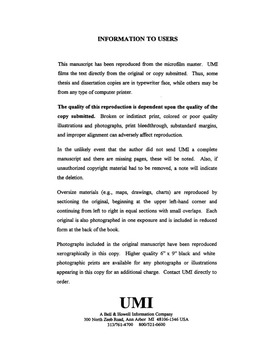| dc.contributor.advisor | Roegiers, Jean-Claude, | en_US |
| dc.contributor.author | Meng, Fanhong. | en_US |
| dc.date.accessioned | 2013-08-16T12:30:25Z | |
| dc.date.available | 2013-08-16T12:30:25Z | |
| dc.date.issued | 1998 | en_US |
| dc.identifier.uri | https://hdl.handle.net/11244/5758 | |
| dc.description.abstract | The developed theoretical formulation and numerical model are validated against several cases where the analytical solutions or other model results are readily available. The performance of the numerical code is tested first by a couple of decoupled cases: elasticity and steady-state flow. The analytical solution for a single-phase single-porosity traditional consolidation problem is then used to verify the numerical algorithm for coupled poroelastic systems. Finally a fully coupled two-phase flow and solid deformation problem is presented to compare results from both the developed model and the finite difference model. | en_US |
| dc.description.abstract | A three-dimensional finite element model is developed to study the two-phase fluid flow problems in the naturally fractured reservoirs. The numerical model is based on the rigorous conservation equations of momentum and mass, in which the solid deformations are lumped while the fluid pressures of the wetting and nonwetting phases are evaluated separately but linked through mass interchange terms for the two interactive media, i.e., matrix and fractures. | en_US |
| dc.description.abstract | Several applications including traditional consolation problems and simulation of rock sample behavior tested in the laboratory are presented to illustrate additional performance and capability of the model. For simulating the rock sample characteristics, a series of studies have been carried out which include single-phase and two-phase fluid flow in both single-porosity and dual-porosity approaches. | en_US |
| dc.description.abstract | The numerous unknowns are resolved through the finite element technique, which enables the solutions to be obtained in the general three-dimensional space domains and integration in time domains. The non-linear system of equations in the finite element model is solved using the direct iteration method, in which each iteration is controlled by the error analyses of the unknowns. | en_US |
| dc.format.extent | xx, 186 leaves : | en_US |
| dc.subject | Porous materials Fracture. | en_US |
| dc.subject | Geotechnology. | en_US |
| dc.subject | Geology. | en_US |
| dc.subject | Finite element method. | en_US |
| dc.subject | Two-phase flow. | en_US |
| dc.subject | Oil reservoir engineering Mathematical models. | en_US |
| dc.subject | Engineering, Petroleum. | en_US |
| dc.title | Three-dimensional finite element modeling of two-phase fluid flow in deformable naturally fractured reservoirs. | en_US |
| dc.type | Thesis | en_US |
| dc.thesis.degree | Ph.D. | en_US |
| dc.thesis.degreeDiscipline | Mewbourne School of Petroleum and Geological Engineering | en_US |
| dc.note | Source: Dissertation Abstracts International, Volume: 59-12, Section: B, page: 6476. | en_US |
| dc.note | Adviser: Jean-Claude Roegiers. | en_US |
| ou.identifier | (UMI)AAI9914411 | en_US |
| ou.group | Mewbourne College of Earth and Energy::Mewbourne School of Petroleum and Geological Engineering | |
